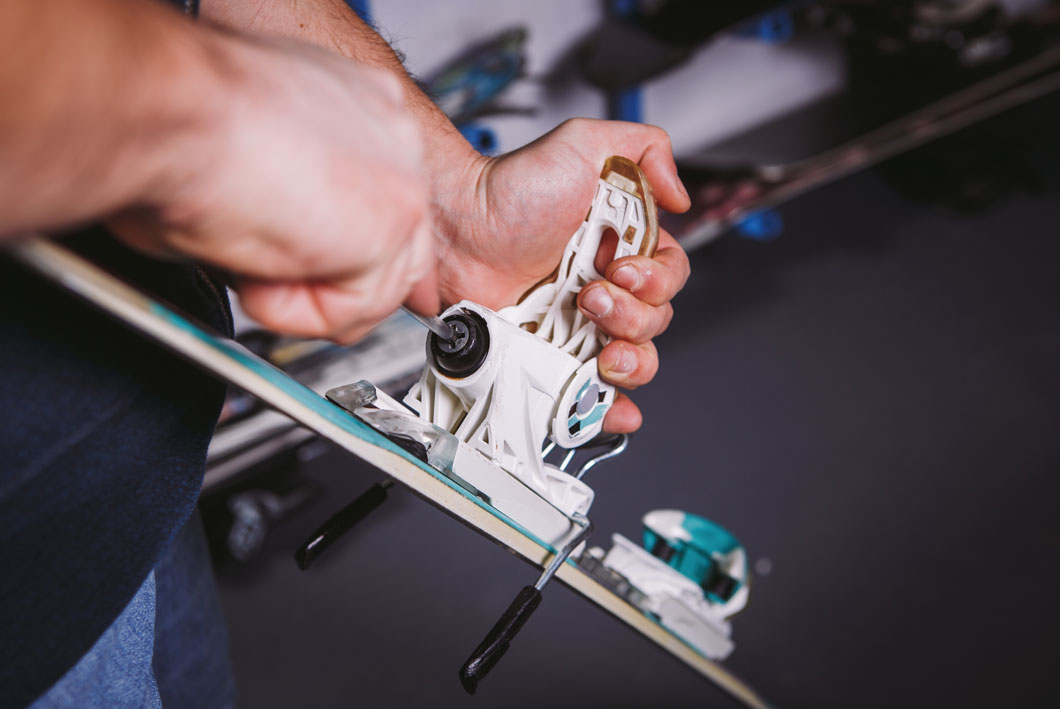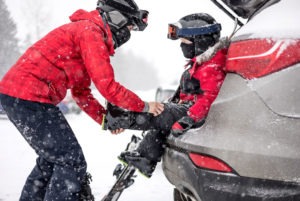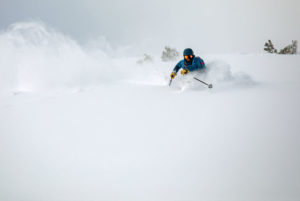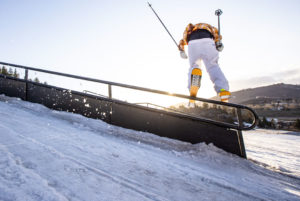There are many components of skiing that you may be unfamiliar with, especially if you’re newer to the sport or are still learning. One thing that you will probably come across and that may cause some confusion is the DIN setting on your ski bindings. What is this? How is it adjusted? Let’s take a look at everything you need to know about this ski setting as well as a ski binding DIN chart!
What is a DIN setting?
DIN stands for “Deutsches Institut für Normung” which is the German Institute for Standardization. Essentially, it is a measurement scale that determines when your bindings will release and cause you to fall out of your skis. Why is this important? Well, if you had no way of being released from your ski bindings during a fall or a crash, you could easily experience a serious injury due to the fact that your skis would be stuck to your feet. Allowing them to release, then, will prevent you from some injuries that can easily be avoided.
Your DIN setting takes many things into consideration—your height, weight, ability level, type of skiing you do, age, and boot sole length—to give you a number that will determine how much force is needed to release you from your bindings.
The higher the number, the more force that is needed to release you. Too low of a number could cause you to be released too soon while too high of a number might not release you in time to prevent injury.
Brief History of the DIN setting
Releasable ski bindings were first invented by a Norwegian race skier, Hjalmar Hvam, who lived in Oregon in the 1930s. The story goes that while he was in the hospital as a result of a ski injury, he had a vision of bindings that released skiers during crashes. This sparked the idea of releasable bindings, the first of which was called the Saf-Ski which Hvam patented in 1939. Since then, numerous companies such as Atomic, Look, and Marker have gone on to create the releasable ski bindings that we use today.
Choosing Ski Bindings
Ski bindings will have a DIN range that they are capable of being adjusted to once they are mounted. When you are looking for a new pair of bindings, you will want to look at these numbers to make sure you are selecting something that will work for your specific ski setting.
If you’re new to skiing and have absolutely no idea what your DIN number or range is, you can refer to the ski binding DIN chart below!
Ski Binding DIN Chart
Here is a general ski binding DIN chart to refer to as you get an estimate of where your setting might be. Remember that this ski setting chart is NOT a replacement for visiting your local ski shop and getting your DIN set by a professional!
| Skier’s Weight | Ability Level | Estimated DIN Range |
| 25-55 lbs | beginner-intermediate (kids) | 0.5 – 2 |
| 30-100 lbs | beginner-intermediate (junior) | 1 – 4.5 |
| 50-150 lbs | beginner-intermediate | 2 – 6.5 |
| 65-175 lbs | beginner-intermediate | 3 – 10 |
| 65-230 lbs | intermediate-advanced | 4 – 11 |
| 65-250 lbs | intermediate-expert | 4 – 12 |
| 130-280 lbs | intermediate-expert | 6 – 14 |
| 130-200+ lbs | intermediate-expert | 6 – 16 |
| 140-200+ lbs | expert-pro | 8 – 18 |
How DIN Settings Are Adjusted
After you’ve purchased your ski bindings, you will obviously need to get them mounted and adjusted before you hit the slopes. Both of these things should be done by a professional ski technician. Do NOT attempt this yourself! Mounting or adjusting your bindings wrong can have serious consequences, so leave it up to the professionals!
A ski technician will first mount the toe piece and then heel of your ski bindings to fit your ski boot, so be sure you have those with you while you are getting your bindings mounted and adjusted. The ski tech will then help you to determine what your DIN setting should be based on all of the elements listed earlier (weight, ability, etc.) and adjust this for you.
Even though it may seem complicated at first, your DIN setting is simply a ski safety feature that can prevent you from experiencing serious injuries. If you have any specific questions that relate to your ski setting, be sure you consult with a ski tech, and always have them help you out when mounting and adjusting your bindings. You don’t want to take any chances when it comes to your safety. We’ll see you out on the slopes!








